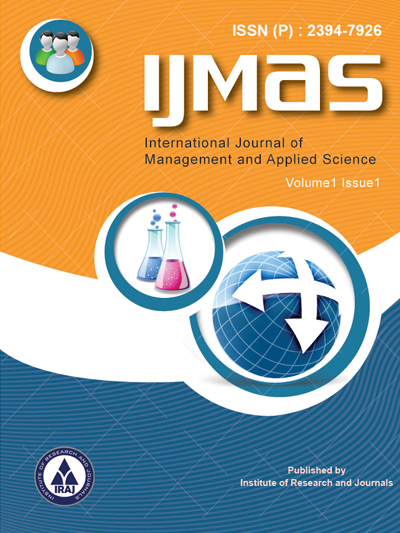Publish In |
International Journal of Management and Applied Science (IJMAS)-IJMAS |
 Journal Home Volume Issue |
||||||||
Issue |
Volume-3,Issue-3 ( Mar, 2017 ) | |||||||||
Paper Title |
Effects of Polyphenolic Extract From Pine Bark on The Improvement of Attention Deficit/Hyperactivity Disorder in Children and Adolescent | |||||||||
Author Name |
Suh-Ching Yang, Yu-Ju Su, Ying-Ru Chen, I-Cheng Lin, Yannick Piriou | |||||||||
Affilition |
School of Nutrition and Health Sciences, College of Nutrition, Taipei Medical University, Wu-Hsing Street, Taipei, Taiwan Research Center of Nutrition and Healthy Longevity, College of Nutrition, Taipei Medical University, Wu-Hsing Street, Taipei, Taiwan Department of Psychiatry,Shuang Ho Hospital, Taipei Medical University,291Zhongzheng Rd., Zhonghe District, New Taipei City 235, Taiwan Les Derives Resiniques&Terpeniques, 40560 Vielle Saint Girons, France | |||||||||
Pages |
167-170 | |||||||||
Abstract |
To examine the hypothesis that intervention with the polyphenolic complex (PE) from pine bark improves the symptoms of ADHD and reduces oxidative stress in children and adolescent. Methods: It was a randomized, double-blind, crossover and placebo-controlled 10-weeks period study, including two interventional periods (4weeks/period) and one washout period (2 weeks). Data were from 8 participants with attention deficit hyperactivity disorder (ADHD) at ages 7~16 years (seven boys and one girl). During the first interventional period, participants were received a capsule of PE from pine bark, which contain 25mg Oligopin® per capsule, or a capsule of placebo, which contains 25mg cellulose. Then, participants entered the washout period for 2 weeks. After 2 weeks of washout, the participants entered the second interventional period and crossed over to receive an Oligopin® or placebo capsule. Psychiatric examination, routine blood biochemical parameter and antioxidative status were carried out in this study. Results: All blood biochemical parameters were normal in the interventional periods. However, the lipid peroxidation was significantly decreased when participants received the PE capsules. Moreover, the participants had a significant higher accuracy and consistency during the PE interventional period. Conclusions: The administration of the polyphenolic extract from pine bark (25 mg/day) for one month might improve the inattention and impulsivity and reduce plasma lipid peroxidation levels in children and adolescent with ADHD. Keywords: Polyphenolic extract from pine bark, Attention deficit/hyperactivity disorder | |||||||||
| View Paper | ||||||||||